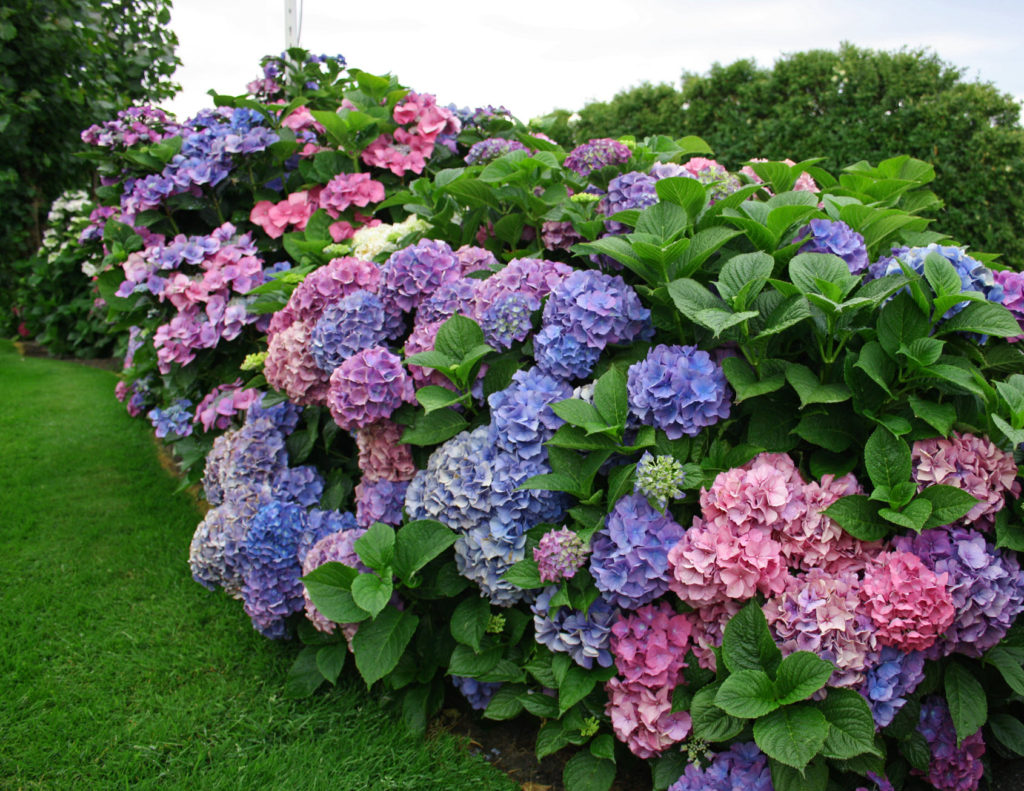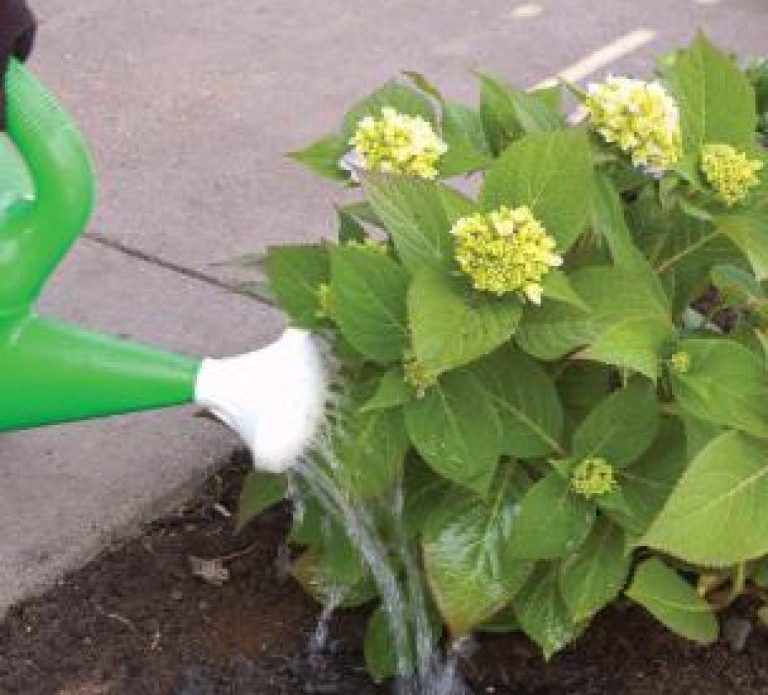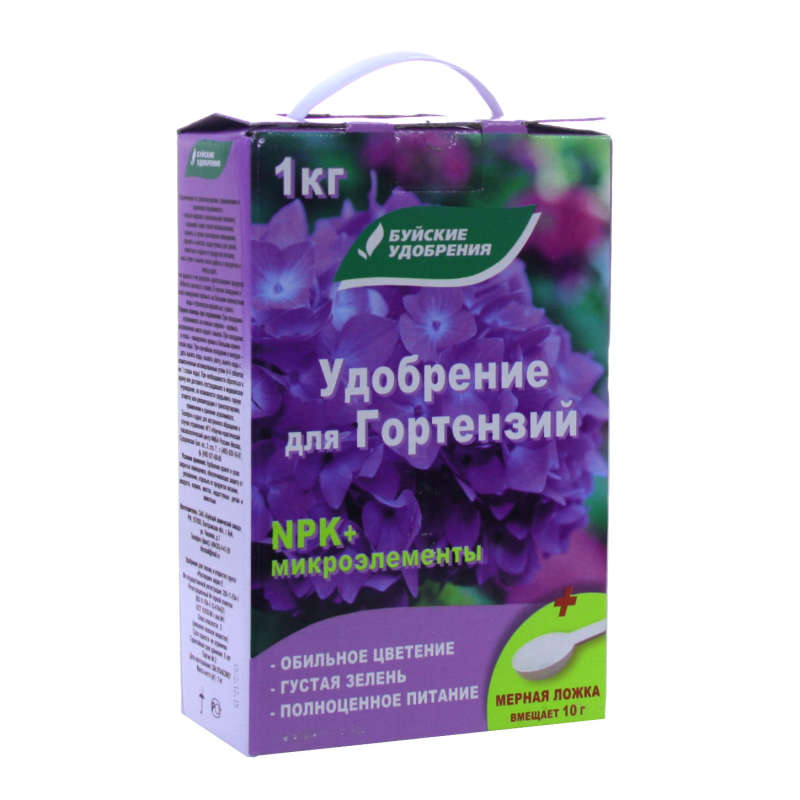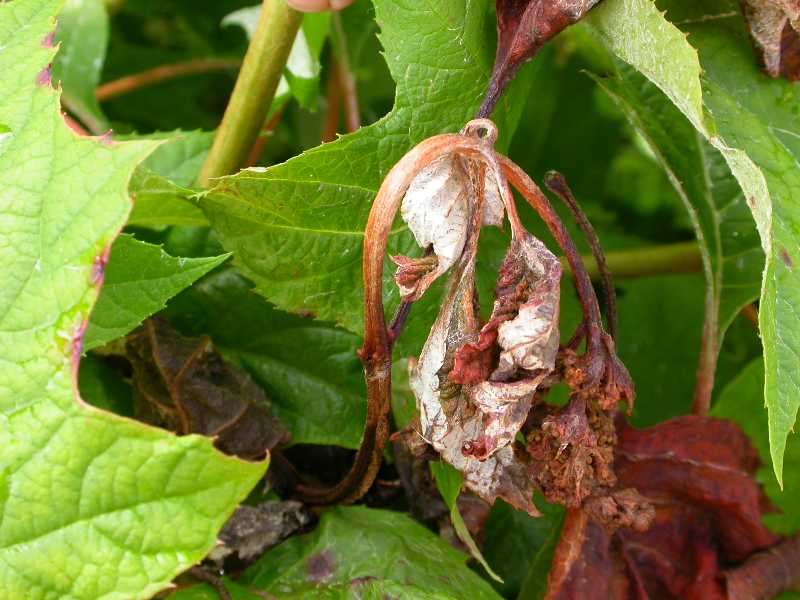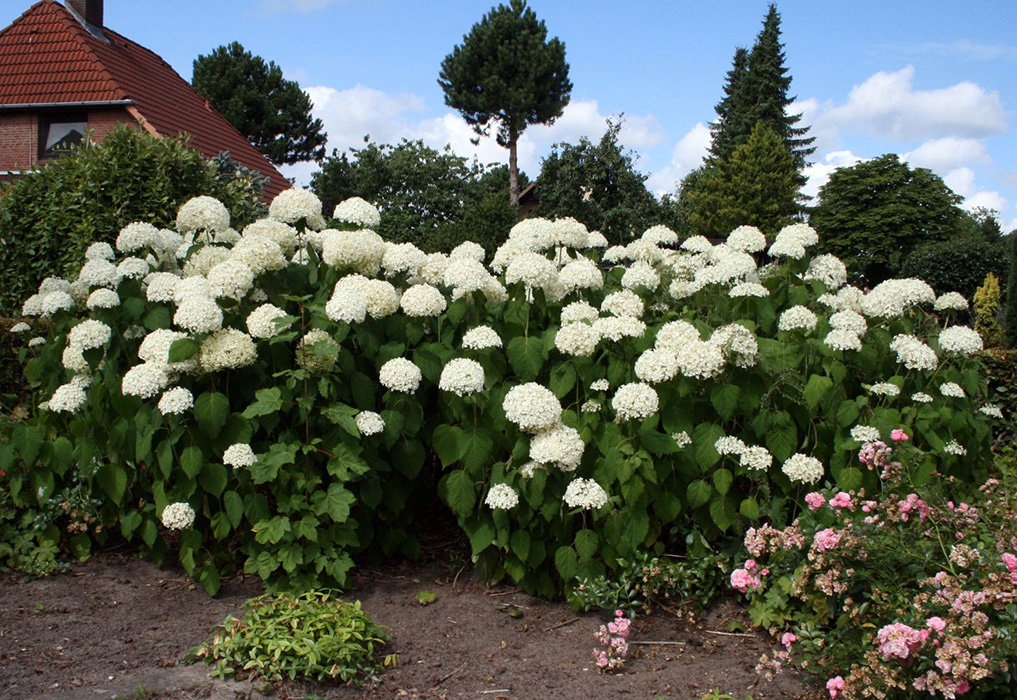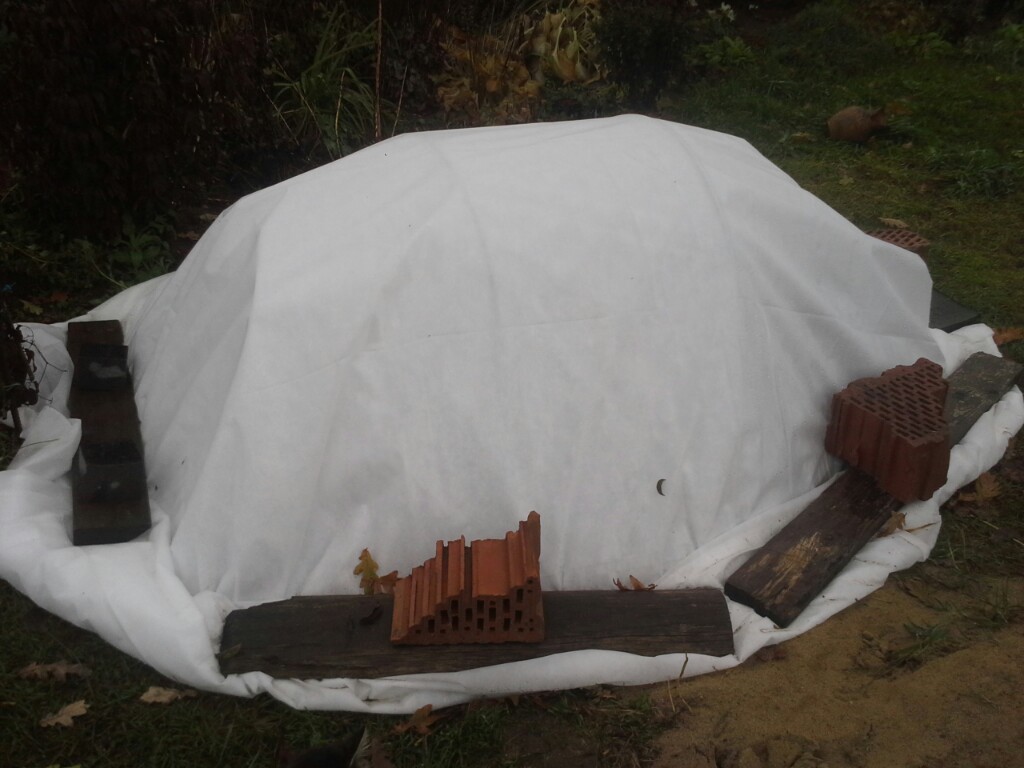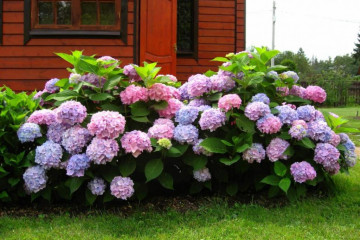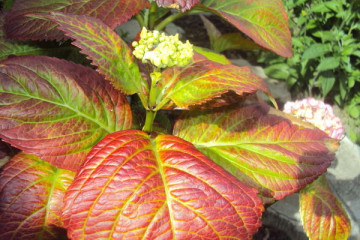Why hydrangea does not bloom - what to do if a garden flower gives only foliage
Content:
Hydrangea is a beautiful shrub that requires special care. The slightest flaws lead to growth disturbances and the absence of inflorescences. To understand why hydrangea does not bloom, one should study the possible problems and features of growing various varieties.
When and how hydrangea should bloom
Landscape designers and gardeners strive to plant ornamental plants so that their flowering is continuous. A properly selected hydrangea variety will provide a vibrant bloom for the entire season.
Early species begin to bloom in early summer, and the process ends in September (for most varieties). In temperate climates, the large-leaved shrub develops steadily until the first frost. There are exceptions:
- Hydrangea macrophylla Hornly, Pinky Winky - blooms from August to September;
- Messalina, Green Racer - June to July;
- Phantom - June to October.
The average flowering period for other varieties is from July to October. If you think about planting in advance, by combining individual varieties of hydrangea, the plant can delight with bright colors for the whole season. A special case is indoor hydrangea, the growth and development of which takes place at home. Usually these are undersized varieties.
Household earth oxidizers include coffee grounds, used tea leaves, lemon juice solution (or commercial citric acid). Purchased seedlings bloom later. They need more time to adapt to open areas.
Why garden hydrangea does not bloom, but only leaves grow
To understand why hydrangea does not bloom, but gives only foliage, it is necessary to analyze several aspects: the place and method of planting, the quality of watering and added fertilizers. Typical mistakes gardeners make:
- lack of measures to prepare for the winter or violation of general requirements;
- incorrect pruning of branches;
- mistakes in seasonal care.
Some of these shortcomings can be eliminated and the flower saved, others lead to the death of the stems and the death of the bush.
Frozen kidneys
Unexpected spring frosts harm ornamental crops. If a young plant experiences seasonal temperature drops, there will be no flowering. The only solution is to insulate the bush:
- mulch the soil with sawdust, peat;
- build a "house" of branches (for small bushes);
- cover with a box and non-woven material (often used for indoor plants);
- next spring, the hydrangea is shaded, they provide good complementary foods.
Irrigation irregularities
Hydrangea loves abundant watering - 20-30 liters per bush per week (every 3-4 days). If summers are hot and dry, increase the frequency of watering. Moisturizing is carried out every day or every other day. Additionally, the leaves are sprayed with a spray bottle. Mulching helps to retain moisture in the soil.
If the soil at the planting site is clayey, the water stagnates. In this case, drainage is formed. Loosening the soil will not give the usual result due to the high sensitivity of the roots. They are piled up no deeper than 10 cm.
Incorrect landing site
The landing site is chosen in advance (before the purchase). Hydrangea, regardless of the variety, loves good lighting, but does not tolerate direct sunlight. Slight partial shade is acceptable. The best option would be a place near the fence or walls.
In open areas, the decorative culture will bloom for a short time. Large-leaved varieties are planted only in the shade. In addition to lighting, the strength and direction of the wind are taken into account. Hydrangea does not like strong gusts from the north and east - they weaken and break the stems.
Excess or lack of nutrients
Mineral fertilizers are necessary for every ornamental plant. Lack of nutrients, as well as excess, leads to poor growth, lethargy, lack of flowering, and disease.
Nitrogen compounds are applied only in the spring. In summer and autumn, the mixture should contain mainly phosphorus and potash fertilizers. They activate the ovary, which promotes the development of inflorescences.
Regardless of the purpose of feeding, it is important to follow the recommendations for use, which are indicated on the package. Basic moments:
- the first spring root feeding should consist mainly of nitrogen components with the addition of potassium, phosphorus and other minerals;
- fertilizers are dissolved in clean water, the usual dosage is 10 liters per 1 sq. m of soil;
- the second feeding is applied during the period of bud formation - potassium plus phosphorus, nitrogen is permissible in a small amount (so as not to create a deficiency of the element);
- the third stage - flowering time, potassium-phosphorus feeding;
- fourth - autumn, upon completion of flowering, nitrogen-free mixtures with potassium and phosphorus.
You can use special ready-made formulations for hydrangeas (selected by variety and stage of growth).
Incorrect pruning of shrubs
Pruning is an essential step in the care of your tree hydrangea. It is impossible to get beautifully growing inflorescences on chaotically spaced stems. There are varieties that do not need autumn pruning. Gardeners often remove the stems with flower buds. Such a flower will not bloom next year.
Some varieties grow quickly, most of the branches go into the bush. If you do not thin out, the inflorescences will not be able to develop normally, they will be small and inconspicuous. Every 5 years, rejuvenating pruning is done - no buds appear on old branches.
Damage by diseases or pests
Hydrangea is practically immune to disease. The lack of scent does not attract bees. Pest insects rarely appear on bushes. Most often, chlorosis appears on the leaves of the bush - the green color disappears, the leaves become pale, dirty yellow, spotted, and quickly fall off. Inflorescences become small or do not form at all.The bushes are treated with a solution of ferrous sulfate (including those on which the disease has not yet manifested itself). Fungal infections are eliminated with the help of Bordeaux solution, copper sulfate.
Hydrangea pests include slugs, spider mites and aphids. If the shrub is strong, insects will not spread. In most cases, young petiolate plants or those weakened after illness are affected.
Planting an already blooming hydrangea seedling
Hydrangeas do not tolerate transplanting well. The adaptation period can drag on for the entire season, therefore, the existing inflorescences will fall off, and new ones will not appear. Difficulties arise for the following reasons:
- too much or a lack of fertilizers at the stage of growing a seedling;
- moving a flower from an acidic soil to a slightly acidic or alkaline;
- if the bush has a closed root system (grew in a pot), the earthen ball is not removed.
It is important to transplant the seedling correctly, to achieve optimal microclimate parameters. It is necessary to make a landing pit in advance, provide shade.
Weak root system
The problem arises from transplantation, lack of nutrients, improper care or neighborhood. Determine the problem by lightly sipping on the bush - weak roots will quickly separate from the soil, tear, break. To remedy the situation, it is necessary to find out the reason for the weakening of the root system, add fertilizers that are relevant for the current stage of growth, and mulch the soil.
The reasons for the lack of flowering in some varieties of hydrangea
Hydrangea varieties differ not only in external characteristics, but also in care features. For example, some bloom well in the shade, others poorly. This applies to three main groups.
Paniculata
Hydrangea resistant to low temperatures (if there is no excessive frost, wintering without shelter is allowed). Most often it does not bloom due to unsuitable soil:
- sandy soil - unacceptable for all types of plants;
- clayey - picks up moisture, which leads to stagnation (additional drainage is needed);
- loamy acidic - the best option.
Large-leaved
A common problem with large-leaved hydrangea is kidney freezing. It is important to insulate plants for the winter. Pruning broadleaf crops is carried out carefully, regularly, cutting off branches at a slight angle. You can not remove the stems formed on last year's processes - it is on them that the buds are tied.
Tree-like
This group of plants is not resistant to frost and requires careful shelter. Sometimes the inflorescences grow colorless, which means a lack of nutrition. Fertilizers begin to be applied from the moment the first green leaves appear and continue throughout the season. The reason for the lack of flowering is insufficient watering.
Pink
Pink hydrangea is extremely popular in Russia. There are treelike and paniculate types. The lack of flowers depends on the variety of rose bush. If the plant changes color to blue or white, then the acidity of the soil has changed.
Why indoor hydrangea does not bloom
Indoor varieties are considered unpretentious, bloom magnificently and brightly. There are several reasons for the lack of inflorescences:
- change of location - for example, after the purchase, the flower moves from the store to the apartment, the lighting changes, the humidity of the air, the plant is under stress, drops the buds;
- no transplant - purchased seedlings are usually grown in sub-extract mixtures, and not in full-fledged nutrient soil; such a flower needs a transplant, with the provision of abundant watering and feeding;
- being in one pot for more than two years - the root system grows, the absorption of nutrients and water deteriorates;
- an excessive amount of nitrogen fertilizers (the best option is special mixtures for hydrangeas).
How to make a shrub bloom
In the fall, plants are prepared for wintering. If the hydrangea has not bloomed during the season, a dense shelter is required. Main steps:
- loosening, covering with mulch (use crumb from tree bark);
- adding nitrogen-free fertilizers (dusting with humus or compost);
- for varieties that are resistant to frost, they form special shelters from branches, cover with a waterproof cloth (in the conditions of the Urals and Siberia).
If the hydrangea variety tolerates low temperatures, it is better not to transplant the plants into pots - the shrub does not adapt well to the new place.
Timely pruning
Pruning is carried out in spring and autumn. The secateurs are sharpened, treated with a disinfecting solution.
Selection of suitable dressings and fertilizers
Nourish plants from spring to winter. The formulations are mixed by hand or used ready-made. Mixtures with prolonged action are applied once - in early spring. During the season, fertilizers will slowly penetrate the soil and feed the plants.
Change in soil acidity
Soil acidity is a determining factor for hydrangeas. The shrub reacts to any long-term changes (the color of the inflorescences changes, with sudden jumps, the bushes stop blooming, weaken). Experienced gardeners use special equipment to measure the acidity and amount of minerals in the soil.
Controlling diseases or pests that interfere with flowering
Hydrangeas of all types are resistant to diseases and pests. A strong plant prevents the development of harmful insects. The bushes are treated for prevention. In extreme cases, garden remedies are used (copper sulfate, Bordeaux liquid, and others).
Every gardener should know what to do if the panicle hydrangea is not blooming. Problems will not appear if you choose the right plant variety, prepare the planting site and provide proper care.

